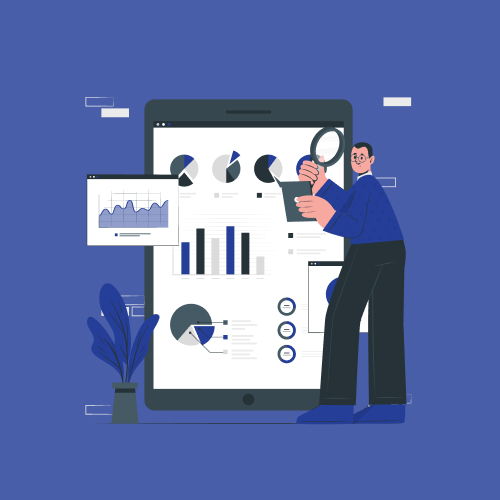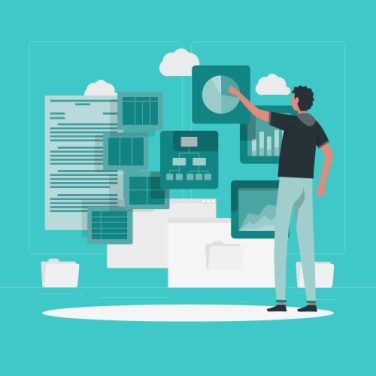The HR technology landscape refers to the suite of software, platforms, and tools that automate, manage, and optimise human resource functions across the employee lifecycle.
It spans everything from core administrative processes such as payroll, benefits administration, and time tracking to strategic talent management modules that support recruitment, learning, and performance.
In 2025, the HR technology landscape integrates emerging innovations like AI-driven analytics, cloud-native HCM suites, and immersive employee experience solutions.
Scope highlights include:
- Administrative automation: Core HRIS functions for data management, compliance, and record-keeping.
- Talent acquisition: Applicant tracking systems (ATS), candidate relationship management (CRM), and onboarding portals.
- Learning & development: Digital training platforms, VR/AR simulations, and personalised learning paths.
- Employee engagement: Self-service portals, mobile attendance tracking, and collaboration suites.
- Analytics & insight: Predictive workforce forecasting, diversity dashboards, and real-time engagement metrics.
Understanding this hr technology landscape equips HR managers and IT leaders with the insight to select systems that align with strategic objectives. By reviewing market shifts in digital HR and exploring the role of technology in HR management, organisations gain a competitive edge through optimised processes, faster decision making, and enhanced employee experiences.
Milestones in HR tech evolution
The journey of HR technology began with manual, paper-based record keeping. In the 1980s, large organisations digitised basic personnel files, but processes remained largely manual.
By the early 2000s, on-premises HRIS solutions emerged, enabling centralised databases and basic reporting.
The shift to cloud-based HCM and SaaS delivery models in the 2010s democratised access for small and midsize enterprises.
More recently, mobile apps, advanced analytics, and AI have ushered in a new era of proactive talent management.
| Year | Innovation | Impact |
|---|---|---|
| 1980s | Paper-to-digital conversion | Centralised employee files; reduced physical storage |
| 2000s | On-premises HRIS | Standardised payroll, benefits, and reporting |
| 2010s | Cloud-based HCM/SaaS | Scalable deployments, remote access, lower TCO |
| 2020s | Mobile, Analytics & AI | Real-time dashboards; predictive talent insights |
As organisations adopt platforms with embedded AI, routine tasks like resume screening and compliance reporting become automated.
The modern HR technology landscape emphasises integrated ecosystems—where HCM, recruitment, analytics, and engagement tools communicate seamlessly.
For technical product managers and HR leaders, this evolution highlights the importance of selecting scalable, extensible solutions that support future growth and innovation.
Core components of modern HR tech: HCM, HRIS, HRMS, and Payroll
Modern HR technology ecosystems comprise several interlocking modules:
- HCM (Human Capital Management): Integrates core HRIS (employee data storage) and HRMS (workflow automation) functions. HCM platforms like MiHCM Enterprise offer modules for performance management, succession planning, and compensation.
- Payroll software: Automates wage calculations, tax withholdings, and benefits deductions. With global payroll management capabilities, organisations ensure compliance across jurisdictions and reduce administrative overhead.
- Talent acquisition modules: Applicant tracking systems (ATS) and candidate relationship management (CRM) tools streamline resume parsing, interview scheduling, and onboarding checklists.
- Nhân viên tự phục vụ: Mobile portals allow staff to view pay slips, request time off, update personal data, and enrol in benefits programmes. By empowering employees, this component reduces HR inquiries and drives engagement.
Implementing a unified HCM suite reduces data silos and simplifies compliance reporting. With MiHCM Lite for smaller teams and scalable Enterprise tiers for large workforces, organisations can select the right mix of global payroll management and self-service features. The result is lower operational cost, improved accuracy, and a more responsive HR function.
Top HR tech tools shaping the landscape in 2025
In 2025, the competitive HR technology landscape features a range of specialised solutions:
- Cloud-based HCM platforms: Solutions like MiHCM Enterprise provide end-to-end HRIS, payroll, and talent management in a unified environment. Its SaaS delivery model enables rapid deployments and seamless updates.
- AI-powered recruitment tools: Platforms embed machine learning algorithms to screen resumes, rank applicants, and predict cultural fit, reducing bias and accelerating time-to-hire.
- Employee experience suites: Collaboration tools and social intranets foster real-time communication, recognition, and peer-to-peer feedback across distributed teams.
- Digital learning & VR/AR training: Virtual reality simulations and augmented reality onboarding tours create immersive, scenario-based learning. These solutions boost retention rates and accelerate skill acquisition.
- DEI analytics & survey platforms: Tools monitor representation metrics, pay equity, and sentiment analysis. Anonymous surveys and dashboards help HR leaders track progress toward inclusion goals.
Key benefits of HR tech: From recruitment to retention
Adopting a comprehensive HR technology landscape yields measurable benefits across all stages of the employee lifecycle:
- Streamlined recruitment & faster time-to-hire: Automated resume screening and integrated ATS workflows reduce manual effort and fill open roles more quickly.
- Automated onboarding: Configurable checklists and digital document signing eliminate paper forms, minimise errors, and accelerate new-hire productivity.
- Enhanced employee engagement: Self-service portals and mobile attendance tracking empower staff to manage schedules and benefits, improving satisfaction.
- Real-time compliance monitoring: Automated audits and alerts for regulatory deadlines reduce risk and administrative overhead.
- Centralised data for strategic planning: Aggregated workforce metrics enable HR leaders to forecast hiring needs and align talent initiatives with business objectives.
Advanced Analytics and AI in HR
Advanced analytics and AI transform the HR technology landscape by providing predictive insights that inform talent decisions.
Use cases include forecasting turnover, identifying skill gaps, and predicting performance outcomes. By integrating MiHCM Data & AI, HR teams gain real-time dashboards and alerts, enabling proactive interventions.
| Use case | Benefit | Tool |
|---|---|---|
| Turnover prediction | Identifies at-risk employees before departures | MiHCM Data & AI |
| Talent gap analysis | Highlights skill shortages and training needs | HR Analytics for better decision making |
| Performance forecasting | Projects future productivity and goal attainment | Trợ lý thông minh |
The architecture combines an enterprise data warehouse, AI engines, and customisable dashboards. Real-time data pipelines feed engagement scores, recruitment metrics, and performance indicators into MiHCM, delivering live insights via mobile or desktop. To ensure ethical use, organisations must implement privacy controls, anonymise sensitive data, and adhere to global regulations.
For a deeper dive, see our ultimate guide to HR digital transformation, which outlines best practices for data governance and AI adoption. When applied responsibly, predictive analytics empower leaders to make data-driven decisions, optimise workforce planning, and reduce turnover.
Immersive technologies and employee experience: VR/AR and beyond
Immersive technologies such as Virtual Reality (VR) and Augmented Reality (AR) are redefining employee training and engagement. By simulating real-world scenarios, these tools accelerate learning, improve retention, and support a dynamic HR technology landscape that prioritises experience.
- VR training simulations: Realistic environments for safety drills, customer interaction role-plays, and leadership workshops enhance skill mastery without real-world risks.
- AR onboarding tours: Interactive overlays guide new hires through facilities and processes, providing context-sensitive information on equipment and policies.
- Gamified engagement platforms: Experience suites that integrate gamification techniques—points, leaderboards, and badges—boost motivation and reinforce learning objectives.
- Metrics and reporting: Engagement scores, completion rates, and satisfaction surveys feed back into analytics dashboards, measuring ROI and identifying improvement areas.
As part of a holistic HR technology ecosystem, VR/AR solutions connect to broader HCM suites, enabling seamless data flow between learning modules and workforce analytics. This integration fosters a culture of continuous development and drives sustained performance gains.
Ensuring diversity, equity, and inclusion with HR tech
HR technology tools play a critical role in advancing diversity, equity, and inclusion (DEI). By leveraging data and automation, organisations can monitor representation, mitigate bias, and foster equitable development opportunities.
- DEI analytics dashboards: Track demographics, hiring pipelines, and promotion rates to identify gaps in representation and pay equity.
- Anonymous feedback tools: Collect sentiment analysis and pulse survey data without attribution, empowering employees to voice concerns safely.
- Bias-mitigation screening: AI-driven recruitment modules anonymise resumes and focus on skill-based criteria, reducing unconscious bias in candidate selection.
- Inclusive learning pathways: Tailored mentorship programs and personalised skills training ensure equitable access to development resources across diverse talent pools.
Future trends in the HR tech landscape
Emerging innovations are set to redefine the HR technology landscape beyond 2025. These trends emphasise personalisation, security, and well-being, creating more responsive HR ecosystems.
- Generative AI for content & policy drafting: Automated creation of job descriptions, learning content, and internal policies streamlines HR communications.
- Blockchain credential verification: Securely stores and validates educational and professional qualifications, reducing resume fraud.
- Hyper-personalised experiences: AI-driven recommendations for learning modules, career paths, and benefits packages, tailored to individual preferences.
- Well-being & mental health tech: Platforms that monitor stress indicators, offer virtual therapy, and integrate wellness challenges to support holistic employee health.
Organisations that anticipate these trends and integrate them into their strategic roadmaps will enhance agility, foster innovation, and maintain a competitive edge in talent management.
Best practices for smooth implementation
Implementing new HR technology often involves hurdles related to legacy systems, change management, and security. Adopting structured approaches can mitigate risks and accelerate adoption.
- Legacy integration & data migration: Conduct thorough system audits, map data schemas, and use phased migration strategies to minimise disruption.
- Change management: Develop training programmes, establish communication channels, and engage key stakeholders to build buy-in and reduce resistance.
- Security & compliance: Implement role-based access controls, data encryption, and regular audits to protect employee information and meet regulatory standards.
- Cost-benefit analysis: Define clear KPIs, track ROI through analytics dashboards, and adjust implementation plans based on performance metrics.
By following these best practices, organisations can ensure a smoother transition, faster time-to-value, and sustained user adoption across their HR technology landscape.
Leveraging HR tech for competitive advantage
Aligning HR technology strategy with organisational goals enables businesses to optimise workforce productivity and drive innovation:
- Strategic alignment: Define KPIs such as time-to-hire, engagement scores, and compliance rates. Use dashboards to monitor progress and inform leadership decisions.
- Continuous improvement: Solicit employee feedback through MiA’s instant query capabilities and iterate on processes to enhance satisfaction.
- Employee Self-Service: Empower staff with mobile portals for schedule management, benefits enrolment, and policy access, reducing support requests and boosting engagement.
- Global payroll management: Centralise multi-currency payroll and tax compliance within MiHCM Enterprise to minimise risk and ensure on-time payments across regions.



